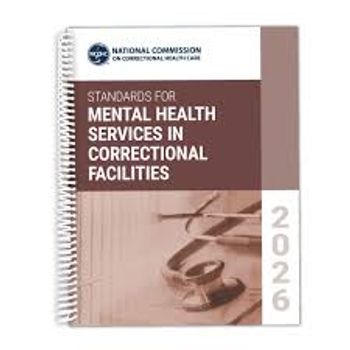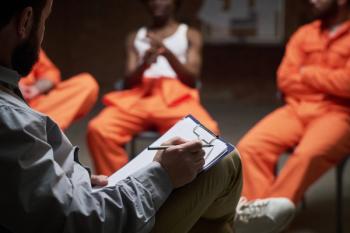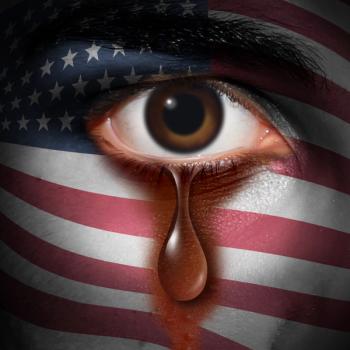
Panic and Pandemics: The Return of the Absurd
We often push thoughts of death far out of our awareness, but at the present time they unavoidably re-emerge. Can we learn something helpful from this?
COMMENTARY
Life is a hospice, never a hospital. -Alain de Botton1
The scientific race to develop a vaccine is in full swing, but when will we begin to develop a more rational, healthy psychological response to pandemics? Camus understood that “pestilences” recurred over time, yet always seemed to take us by surprise. In his classic, The Plague (La Peste, 1947), he writes about a virus that destroys half the population of an ordinary town.2 It is considered one of the greatest novels of the postwar period. Camus lays out our stages of psychological response to a plague, writing: “At the beginning of a pestilence and when it ends, there's always a propensity for rhetoric. In the first case, habits have not yet been lost; in the second, they're returning.” Here, the master of the existential and absurd would have us recognize that inescapable death transforms a habit-constrained life into an exercise in absurdity.
Camus’ Plague may also be viewed as our vulnerability to random extermination by any means. Or as philosopher Alain De Botton1 writes: “Plague or no plague, there is always, as it were, the plague, if what we mean by that is a susceptibility to sudden death, an event that can render our lives instantaneously meaningless.” Camus and similar philosophers believed the Absurd arises out of the conflict between our search for meaning and the apparent random nature and meaninglessness of the universe. What is produced by the conflict will depend on the individual, but may include various forms of denial, dissociation, and sublimation.
And so, it is the Absurd to which we now turn. Indeed, we cannot turn away as we are in the midst of a storm of absurdity. Grocery stores with empty shelves. Hoarding of food and supplies. A
Defending against death anxiety
Beyond the basic stages of denial, recognition, and recovery, are we able to discern any other psychological themes based on a social and psychological analysis of our behavior? Let us approach this in the manner of a psycho-dynamic anthropologist sent from another planet to observe our species at this moment in time. This investigator would first note our extreme “contamination” fears that go well beyond social distancing, handwashing, and so on.
Our observer would note our curious scramble to obtain and hoard toilet paper. Next, our hoarding of provisions and sudden rush to purchase more weapons would be of interest. The observer could easily discern that the stress humans are currently experiencing has created visible fault lines in our socio-cultural structures. All of these findings would be viewed as our reflexive response to sudden and acute death fears-or what is called “mortality salience” in the terror management literature.5 Our alien observer may well conclude that our species has not yet achieved a rational response to our own mortality-impending or otherwise. Finally, it might be recorded for posterity that humans appear to “forget” the social drama pattern, preferring to bury it back into the unconscious not long after the resolution of a pandemic.
Even a brief review of our past concerning responses to intense reminders of death is both enlightening and disturbing. They include such startling responses as scapegoating, “othering,” and a variety of risky death denying behaviors. Anti-Semitism and blaming of Jewish people were rampant when the Bubonic Plague swept across Europe in the 14th century. The Great Flu Pandemic (1918) is more commonly known as the “Spanish Flu,” despite the fact that the virus did not originate in Spain. Other countries were fearful of reporting their own afflicted status, while Spain transparently reported the problem to the press. It would appear that in the recognition stage of an epidemic, the need to explain is so powerful that if uncertainty remains, identification of a scapegoat becomes the default position. And have we seen such responses recently? Indeed, we have. Early anti-Chinese sentiment spread much more rapidly across the globe than actual virus itself. 6 As the pandemic has progressed over the past few weeks, we have seen all manner of panic-inducing reports in the media.
Morbid statistics that rise daily. Breaking news about the latest celebrity to have contracted the virus. One cannot but have sympathy and understanding for the general public who are relentlessly bombarded with confusing, and often divergent, messages. A scientist, who underscores the impact of his op-ed article by noting he is “an MIT-trained physicist and complexity scientist who studies pandemics,” urgently recommends a five-week “national lockdown.”7 Almost simultaneously, a Nobel laureate and Stanford biophysicist, who has analyzed
Without a consistent, calm, level-headed message, how can we expect the public not to resort to well-worn habits that result from confusion and reminders of death? Certainly, they will-and absurdity will, temporarily, ensue. We will divide and “other” just as surely as viruses will mutate and infect us again in the future. Besides reports of hate crimes against Asians rising, the absurd can be seen in recent generational tensions. Millennials have been
Virtually every culture engages in rituals to both forestall and ease death anxiety. It was not until the late 80s that researchers began formally studying death anxiety and how it is a “driving force behind the human motives for self-esteem and meaning in life, and thus plays an important role in diverse aspects of human behavior.”10 According to Terror Management Theory (TMT), our innate biological instinct for survival, combined with our capacity for self-consciousness, sets the stage for painful awareness of our mortality and its attendant terror.11 TMT research, derived from the Pulitzer Prize winning work of cultural anthropologist Ernest Becker, suggests that increased death terror motivates us towards the familiar (e.g., tradition, in-group worldviews, and cultural orientations.12,13 TMT research has progressed over the past several decades, finding that “death primes,” or reminders of mortality, are associated with:
• Hardening of traditions and fundamentalist beliefs14
• Increased use of alcohol15
• Striving to maintain self-esteem16
• Enhanced efforts to achieve attachment security
• Aggression against others who threaten one’s culture or traditions17
Given the continuous media reports of death primes (the pandemic, the precarious nature of our environment, economic and political instability, etc.), one may wonder if the resultant death terror will be more intense than usual.18 Even if this turns out to be accurate, is there any reason for optimism? There is reason to believe so. For example, resilience-a proven strength of humans, is often seen in the midst of crisis and disaster.
Positive aspects of terror management
What we learn in times of pestilence: that there are more things to admire in men than to despise.âCamus (The Plague)
At the heart of every tragedy is the finality of “the end” (e.g., loss) -the ultimate expression of which is death. To reckon with the end and death is to struggle with finding meaning in the face of the absurd. This can be seen in Samuel Beckett’s modernist works dealing with loss, suffering and death.19 Facing the absurd and death terror need not always result in morbid outcomes. TMT research has begun to suggest that resilience, when under the strain of death terror, may lead to positive progress, flexibility and new meanings. Of course, resilience in general is capable of producing personal growth and improved functioning in the face of stress and adversity.20
My colleague, Dr Lloyd Sederer, who has led mental health disaster responses in New York, notes that there are always lessons to be learned and optimistic actions we can take.21 In addition to providing calming guidance in the form of organizational mandates and coordinated responses, we can begin with ourselves. In line with TMT research, Dr Sederer suggests turning to our sustaining, meaningful relationships; adequate self-care; exercise and various mindfulness exercises. TMT research from a positive psychology standpoint has found that death anxiety may also result in the following positive opportunities and growth-oriented goals:
• Valuing creativity and creative achievement22
• Generativity23
• Meaning making
• Mindfulness and meditation24
• Positive health behavior changes25
• Prioritizing growth-oriented goals and positive standards26
Within times of chaos may lie the seeds of opportunity leading to new strategies, novel solutions and expanded meaning. Yet this will depend largely on our ability to sit with uncertainty and avoid the pressure to regress to unhelpful habits. In this way, death fear may serve as a cognitive reorganizer to develop a stronger “existential self-consciousness that sustains a process of self-overcoming.”27 A balance must be achieved, however, between healthy death terror buffers and outright panic driven denial. The influence of death awareness is truly profound, and may generate negative outcomes, as well as impel us along “more positive trajectories and contribute to the good life.”28
Conclusion
Around 1637, the classical French painter Nicolas Poussin completed a masterpiece titled Et in Arcadia Ego, also referred to as The Arcadian Shepherds. The beautiful painting shows an idyllic pastoral scene in which shepherds are gathered around a tomb. The title can be translated roughly to “Even in Arcadia, there I am,” or “Even in Arcadia, death is there.” Since the time of ancient Greece, Arcadia has been a metaphor for a Utopia, as it was far from the complexities and troubles associated with urban city life. As with all great art, it contains multiple meanings. One message is for us to never forget the fragility and brevity of life. Another message, more subtle but equally important, is that we have a duty to do our best to calm and sublimate our death fears. Recognizing this duty now seems to be an important task-one that we cannot allow ourselves to continue repressing.
Camus would likely have endorsed this approach, as his solution to the Absurd was to fully accept it – while continuing to live on – thereby achieving a transcendent form of freedom and personal meaning. Perhaps we might let this pandemic serve as our creative stimulus to begin to develop and test a set of go-to responses to mitigate panic in the face of a pandemic? We will surely have more opportunities to implement them. This would be a human triumph – to better understand and respond to those in the throes of overwhelming death terror, and develop “robust international responses to affected patients and communities.”29 Let us learn and grow from
Disclosures:
Dr Knoll is Director of Forensic Psychiatry and Professor of Psychiatry at SUNY Upstate Medical University in Syracuse, NY. He is Editor in Chief Emeritus of Psychiatric Times (2010 to 2014).
References:
1. de Botton A: Camus on the Coronavirus. New York Times, March 19, 2020. At: https://www.nytimes.com/2020/03/19/opinion/sunday/coronavirus-camus-plague.html
2. Camus, A. (1990). PESTE, LA 2a (Vol. 35). Libresa.
4. Jones, D. S. (2020). History in a Crisis-Lessons for Covid-19. New England Journal of Medicine.
5. Landau M, Solomon S, Greenberg J, Cohen F, Pyszczynski T, Arndt J, Miller C, Ogilivie D, Cook A: Deliver Us From Evil: The Effects of Mortality Salience and Reminders of 9/11 on Support for President George W. Bush. Personality and Social Psychology Bulletin 2004 30(9): 1136-1150.
6. https://www.nytimes.com/2020/01/30/world/asia/coronavirus-chinese-racism.html
7. https://amp.usatoday.com/amp/2890376001?__twitter_impression=true
8. https://www.latimes.com/science/story/2020-03-22/coronavirus-outbreak-nobel-laureate
9. https://www.bloomberg.com/news/articles/2020-03-21/covid-19-divides-u-s-society-by-race-class-and-age
10. Pyszczynski, T. (2019). The Role of Death in Life: Exploring the Interface Between Terror Management Theory and Evolutionary Psychology. In Evolutionary Perspectives on Death (pp. 1-24). Springer, Cham.
11. Pyszczynski T, Sheldon S, Greenberg J: In the Wake of 9/11: The Psychology of Terror. Washington, DC: American Psychological Association, 2006.
12. Becker, E. (2007). The denial of death. Simon and Schuster.
13. Carpenter, S. R., Folke, C., Scheffer, M., & Westley, F. R. (2019). Dancing on the volcano: social exploration in times of discontent. Ecology and Society, 24(1).
14. Landau M, Solomon S, Greenberg J, Cohen F, Pyszczynski T, Arndt J, Miller C, Ogilivie D, Cook A: Deliver Us From Evil: The Effects of Mortality Salience and Reminders of 9/11 on Support for President George W. Bush. Personality and Social Psychology Bulletin 2004 30(9): 1136-1150.
15. McCabe, S., & Bartholow, B. D. (2019). Mortality salience leads to greater consumption of an ostensibly alcoholic beverage on Friday versus other weekdays. British journal of health psychology, 24(4), 847-858.
16. Arrowood, R. B., & Cox, C. R. (2020). Terror Management Theory: A Practical Review of Research and Application. Brill Research Perspectives in Religion and Psychology, 2(1), 1-83.
17. McGregor H, Greenberg J, Arndt J, Lieberman J, Solomon S, Simon L: Terror Management and Aggression: Evidence That Mortality Salience Motivates Aggression Against Worldview-Threatening Others. Journal of Personality and Social Psychology 1998 74(3): 590-605.
18. Carpenter, S. R., Folke, C., Scheffer, M., & Westley, F. R. (2019). Dancing on the volcano: social exploration in times of discontent. Ecology and Society, 24(1).
19. Beckett S: Endgame and Act Without Words. New York, NY: Grove Press, Inc., 1958.
20. Skodol A: The Resilient Personality. In: Disaster Psychiatry: Readiness, Evaluation, and Treatment. Editors Stoddard F, Pandya A, Katz C. Washington, DC: American Psychiatric Publishing, Inc., Chapter 6, 2011.
21.https://www.psychologytoday.com/us/blog/therapy-it-s-more-just-talk/202003/what-do-we-know-about-resilience-in-the-wake-disaster?eml
22. Perach, R., & Wisman, A. (2019). Can creativity beat death? A review and evidence on the existential anxiety buffering functions of creative achievement. The Journal of Creative Behavior, 53(2), 193-210.
23. Herr, D. J., & Buchanan, E. M. (2020). Generativity and other buffers of death awareness in first responders. Anxiety, Stress, & Coping, 33(2), 193-206.
24. Park, Y. C., & Pyszczynski, T. (2019). Reducing defensive responses to thoughts of death: Meditation, mindfulness, and Buddhism. Journal of personality and social psychology, 116(1), 101.
25. Morris, K. L., Goldenberg, J. L., Arndt, J., & McCabe, S. (2019). The enduring influence of death on health: insights from the terror management health model. Self and Identity, 18(4), 378-404.
26. Vail III, K. E., Juhl, J., Arndt, J., Vess, M., Routledge, C., & Rutjens, B. T. (2012). When death is good for life: Considering the positive trajectories of terror management. Personality and Social Psychology Review, 16(4), 303-329.
27. Davis W: Death’s Dream Kingdom: The American Psyche Since 9-11. Ann Arbor, MI: Pluto Press, 2006.
28. Vail III, K. E., Juhl, J., Arndt, J., Vess, M., Routledge, C., & Rutjens, B. T. (2012). When death is good for life: Considering the positive trajectories of terror management. Personality and Social Psychology Review, 16(4), 303-329.
29. Srivatsa, S., & Stewart, K. A. (2020). How Should Clinicians Integrate Mental Health Into Epidemic Responses?. AMA Journal of Ethics, 22(1), 10-15.
30. de Botton A. Camus on the Coronavirus. New York Times. March 19, 2020.
Newsletter
Receive trusted psychiatric news, expert analysis, and clinical insights — subscribe today to support your practice and your patients.













